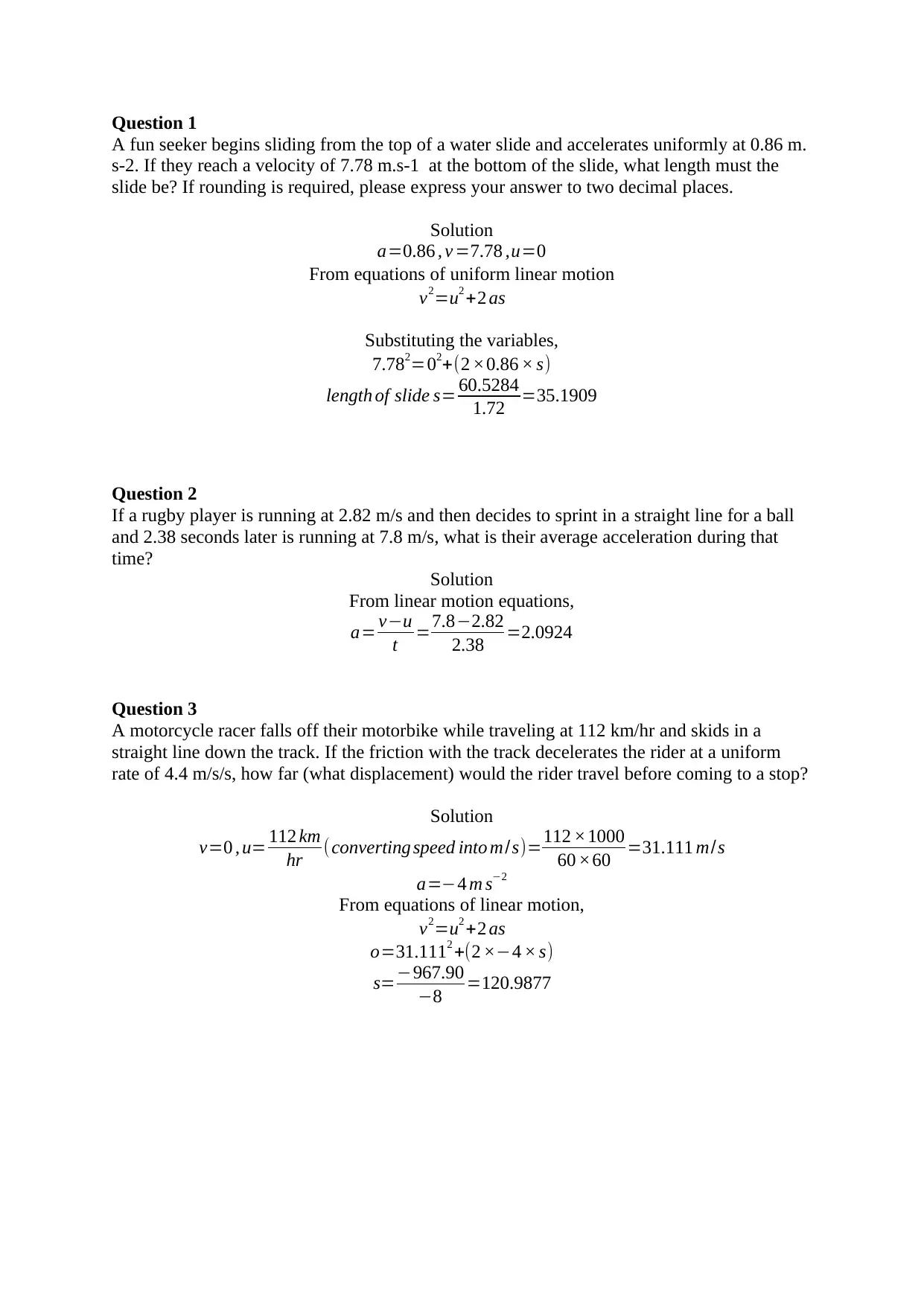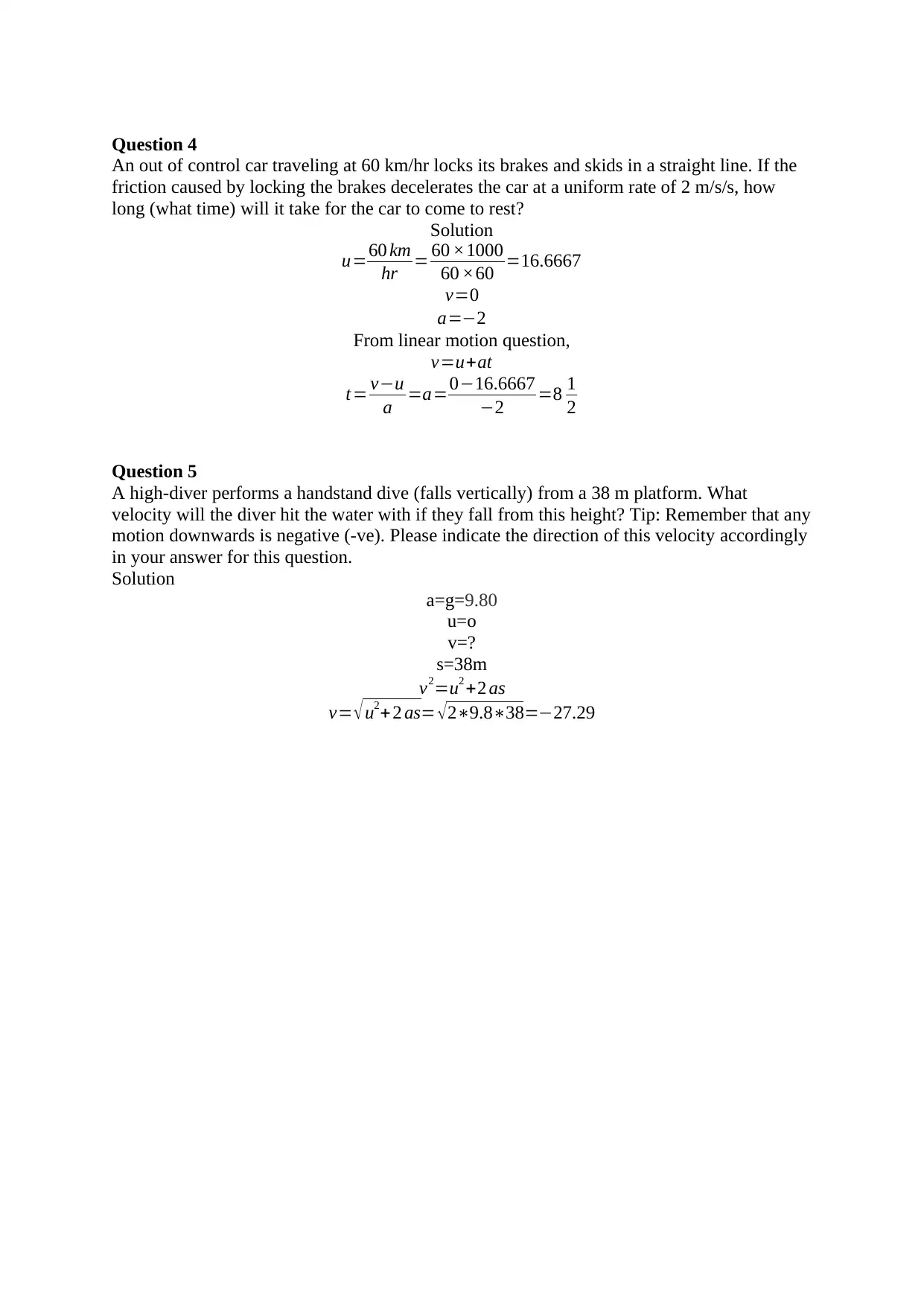Physics Homework: Solving Problems on Uniform Motion
VerifiedAdded on 2023/01/18
|2
|422
|97
Homework Assignment
AI Summary
This assignment provides detailed solutions to five physics problems related to linear motion. The problems cover concepts such as uniform acceleration, calculating the length of a water slide given initial conditions and final velocity, determining average acceleration of a rugby player, calculating the displacement of a motorcycle racer undergoing deceleration due to friction, determining the time it takes for a car to stop given initial speed and deceleration, and calculating the final velocity of a high diver falling from a platform. Each solution includes the relevant formulas, variable substitutions, and the final answer, demonstrating a clear understanding of kinematic principles. This resource is beneficial for students seeking to understand and solve motion-related problems.
1 out of 2


![[object Object]](/_next/static/media/star-bottom.7253800d.svg)